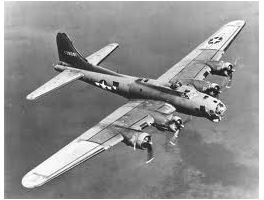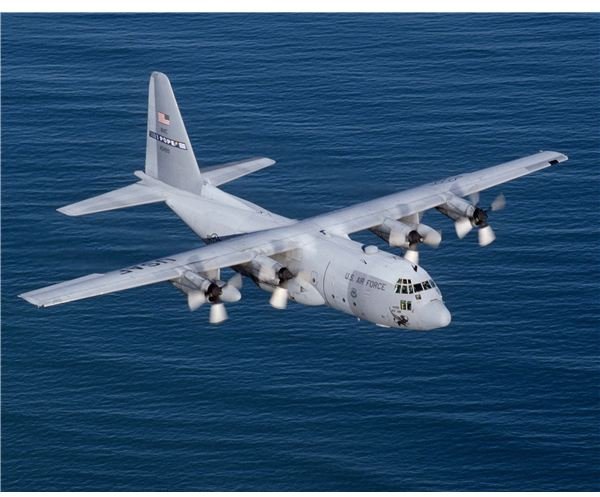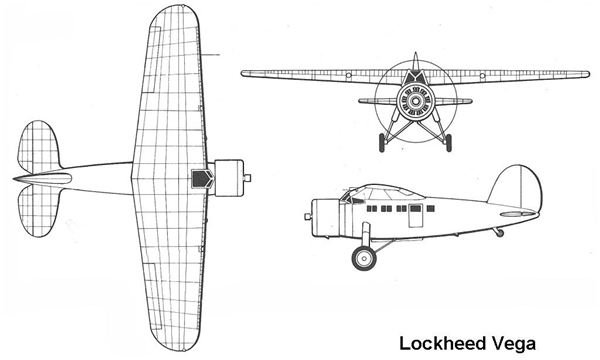Learn About Lockheed Airplanes: Lockheed-Martin Franchise History
Early Years
In 1912, brothers Malcolm and Allan Loughead founded the Alco Hydro-Aeroplane Company, which became the Loughead Aircraft Manufacturing Company. It was located in Santa Barbara, California. This company failed, and in 1926 Allan changed the name to match its pronunciation, and formed the Lockheed Aircraft Company in Hollywood. It was bought by Detroit Aircraft Corporation in 1929 and did not survive the Great Depression.
However, the company was bought out of receivership in 1932 for $40,000. It took up residence at the Burbank airport in 1934. The Lockheed Vega was the first of many successful Lockheed airplanes built in any great number - 141 to be exact. The Vega was flown on a number of record setting flights by famous aviators like Wiley Post, George Hubert Wilkins, and Amelia Earhart.
The small Model 10 Electra, a twin-engine transport plane, became famous when Earhart and navigator Fred Noonan flew one on their ill-fated circumnavigation attempt in 1937. The Lockheed Model 12 Electra Junior and the model 14 Super Electra followed the model 10 in the design chain. The Model 14 became the Hudson bomber, used by both the U.S. and Britain in the years leading up to World War II.
World War II
However, the P-38 Lightning fighter plane, a twin-engine workhorse, attracted a lot more attention, and was the sole U.S. fighter design built throughout the entirety of World War II. These Lockheed airplanes did everything: air-to-air attack, strategic bombing, and ground attack in all theaters and was responsible for shooting down more Japanese planes than any other U.S. plane during the war, including the plane piloted by the infamous Japanese Admiral Isoroku Yamamoto.
In 1943, Lockheed began its secret aircraft development program in Burbank

at what was officially known as the Advanced Development Division, commonly called the Skunk Works (a name taken from the Li’l Abner comic strip). The Skunk Works was responsible for many successful Lockheed airplanes, including the U-2, the SR-71 Blackbird, and the F-117 Nighthawk.
Lockheed and the Vega subsidiary made nearly 20,000 aircraft during the Second World War, including nearly 3,000 B-17 Flying Fortresses built under a license from Boeing.
After the War
After the war, Lockheed worked with Trans-World Airlines to create the L049 Constellation, which could carry 43 passengers from New York to London in 13 hours. It was affectionately nicknamed the “Connie.”
During the 1950s, at the start of the Cold War, Lockheed airplanes included the C-130 Hercules, a four-engine transport plane of a type that is still produced. The C-130 was designed to carry troops, do medical evacuation, and transport cargo. But it has also been used for search and rescue, airborne assault, weather reconnaissance, refueling, and even aerial fire fighting.
The 1950s also brought the F-104 Starfighter, which was the first fighter jet to fly at Mach 2. But the 60s took Lockheed back to making big planes, including the C-141 Starlifter transport plane, the C-5 Galaxy (both military), and the L-1011 TriStar civilian airliner. The C-5 and the L-1011 weren’t easy for Lockheed. Development delays and other problems caused Lockheed to hemorrhage money in the 1970s.
Lockheed airplanes
Lockheed’s airliners and civilian planes included the following (in chronological order): Vega, Model 10 Electra, Model 12 Electra Junior, Model 14 Super Electra, Lodestar, Constellation, Saturn, L-188 Electra, JetStar (a business jet), and the L-1011 Tristar.
For the military, Lockheed produced the C-96 / C-121 (military versions of the Constellation), R6V Constitution, C-130 Hercules, C-141

Starlifter, and the C-5 Galaxy. The fighter planes made by Lockheed started with the P-38 and also included the P-80 Shooting Star, T-33 Shooting Star, F-94 Starfire, F-104 Starfighter, F-117 Nighthawk, F-16 Fighting Falcon, and the F-22 Raptor.
Military patrol and reconnaissance planes started with Lockheed’s Hudson and continued with the PV-1 Ventura and PV-2 Harpoon, P-2 Neptune, P-3 Orion, U-2, SR-71 Blackbird, S-3 Viking, and YO-3A Quiet Star.
References and Image Cfredits
https://www.lockheedmartin.com/aboutus/history/index.html
https://www.generalatomic.com/jetmakers/chapter7.html
https://www.generalatomic.com/jetmakers/chapter8.html
https://www.pbs.org/kcet/chasingthesun/innovators/lockheed.html
https://freercplans.com/img-lockheed-vega-3v-8190.htm
